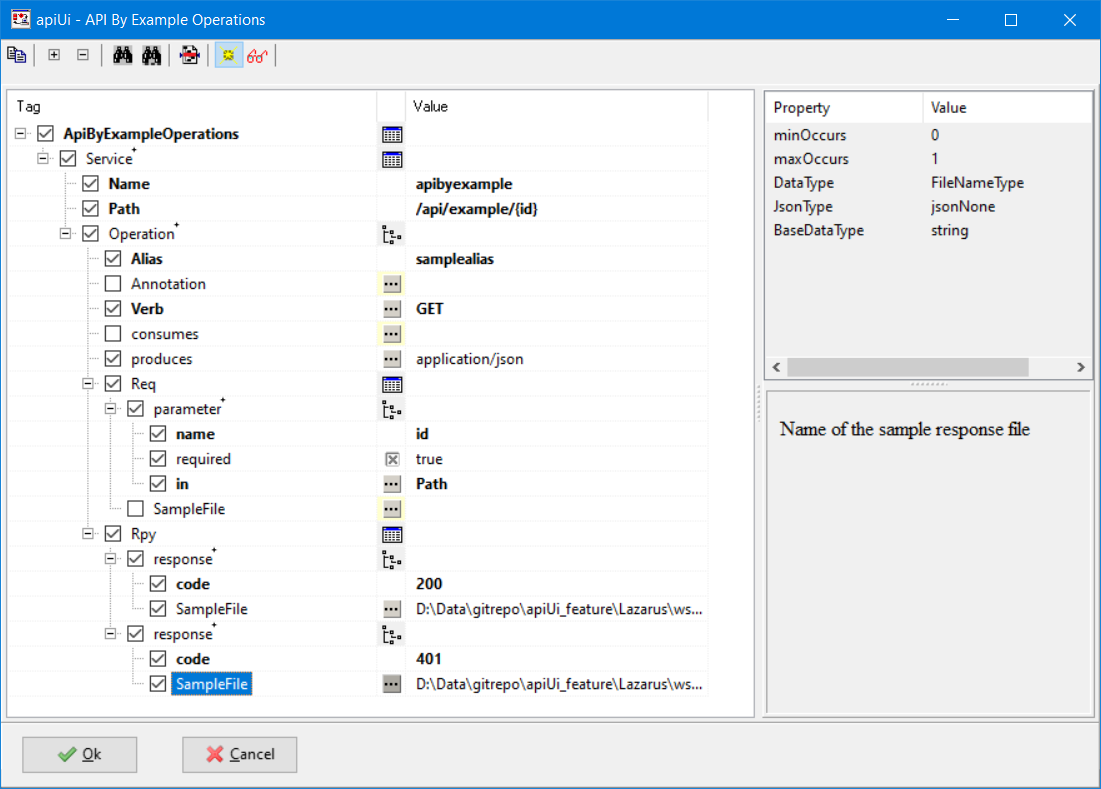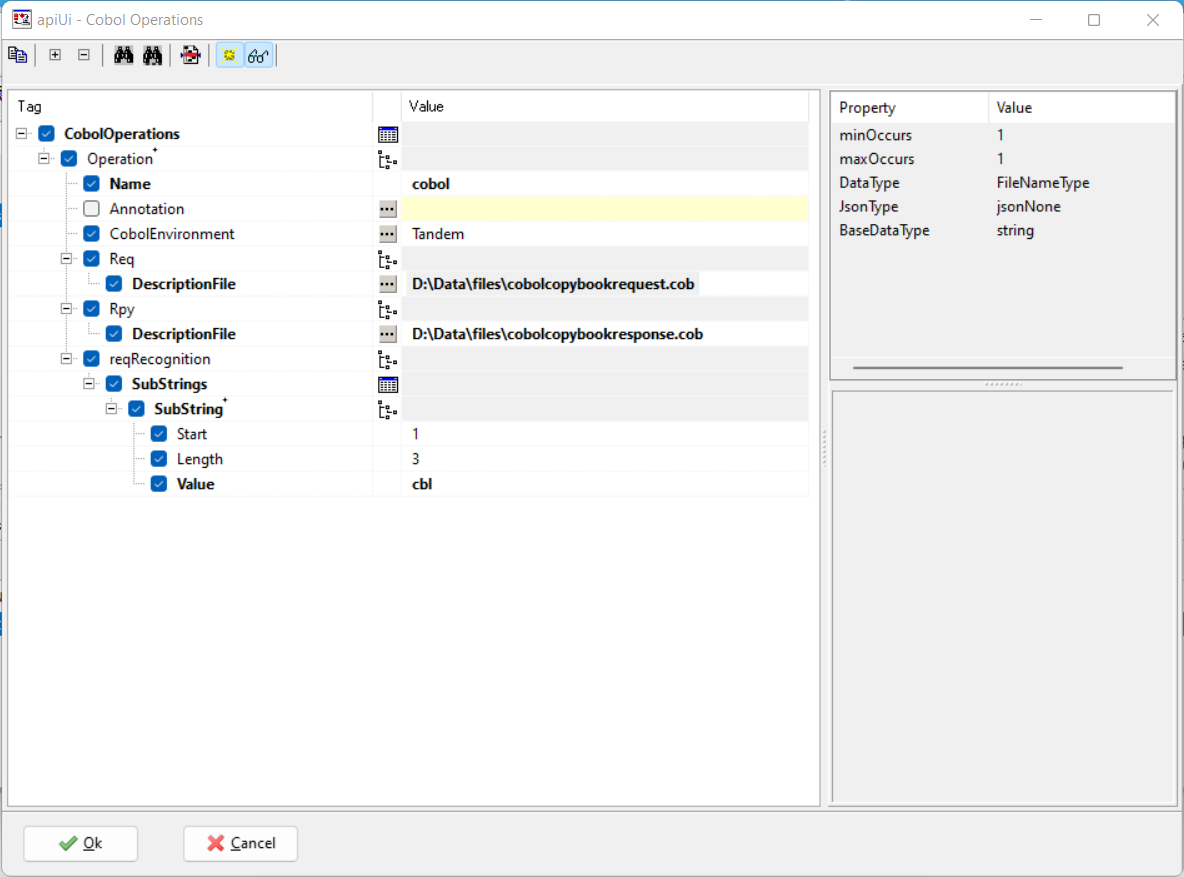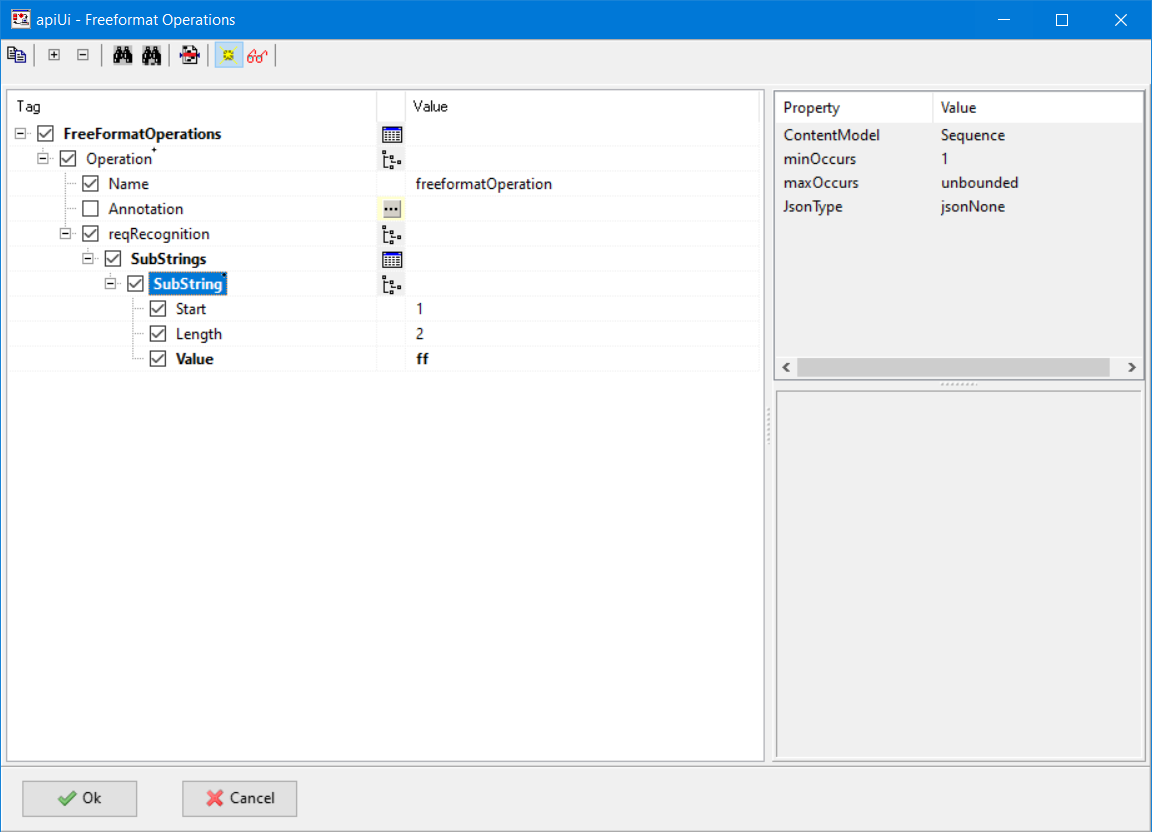Importing schema's
It is of course possible to work with apiUi in a freeformat way.
But by doing so, you will miss important features like schema validation and you will miss the ease of data-entry that apiUi offers.
apiUi supports WSDL's for Soap/Xml and Swagger or OpenApi specifications in either JSON or YAML format for REST Api and it is able to introspect Cobol record specifications.
As a work-around for those who want to take advantage of apiUi features but do not have a formal description for their service, there is the API by example... feature.
Maintain list of WSDL and API files...
Get there with the menu-option Project->Maintain list of WSDL and API files... or press the corresponding speed-button.
 Functions on this pop-up form are:
Functions on this pop-up form are:
Close
Accept the changes and leave this screen.
apiUi will repeat its preparation step and the list of operations in the left panel will get updated.
Cancel
Leave the screen without accepting changes.
Add
Another form will be displayed in which you can either specify an URL or a local file.
After accepting your input, apiUi will then try to introspect the file or URL specified. On success, the List of WSDL and API files will get updated. If introspecting fails, apiUi will display a message with the reason for failing.
Delete
The currently selected file will be removed from the list.
API by example...
Get there with the menu-option Project->API by example... or choose the corresponding option from the drop-down speed-button.
Although it is strongly recommended that you use formal descriptions (provider contracts) you can work without as soon as you have sample messages and know paths and other parameters.
 Filling in this form is rather straight-forward and useful information is displayed in the right column.
Filling in this form is rather straight-forward and useful information is displayed in the right column.
Based on your specification and the provided sample messages, apiUi will build an internal specification whereby it tries to recognize data-types (e.g. booleans, numerics, timestamps) on the provided values. Default data-type is of course string and each element will be optional. In case of XML, make sure your sample messages reflect repeating elements by having at least two of such elements in your samples.
Cobol operations
Get there with the menu-option Project->API by example... or choose the corresponding option from the drop-down speed-button.
apiUi will present below form to enter specifications.

Specify an operation for each request record description that you want to include.
Each cobol description file should describe exactly one cobol record.
For inbound operartions, make sure that the request recognition enables apiUi to choose the right record specification.
Freeformat operations
Get there with the menu-option Project->Freeformat operations... or choose the corresponding option from the drop-down speed-button.
apiUi will show the below input-form.
 Request recognition specification only makes sense on inbound operations.
Request recognition specification only makes sense on inbound operations.
For each freeformat operation you will have an operation where each message candidate has a free text box for the request and a free text box for the response.